So, really last night now, we were receiving warnings of dire storms to pass through the area, with conflicting time frames, but I was ready for them regardless. I’m fine with sunny clear weather, and even lightly overcast days, because each has their own light quality for different subjects, but when the weather itself is a subject, good bracing storms are a lot more fun. Not too long before sunset, the sky was uniformly overcast but throwing out multi-level clouds with some nice shapes.
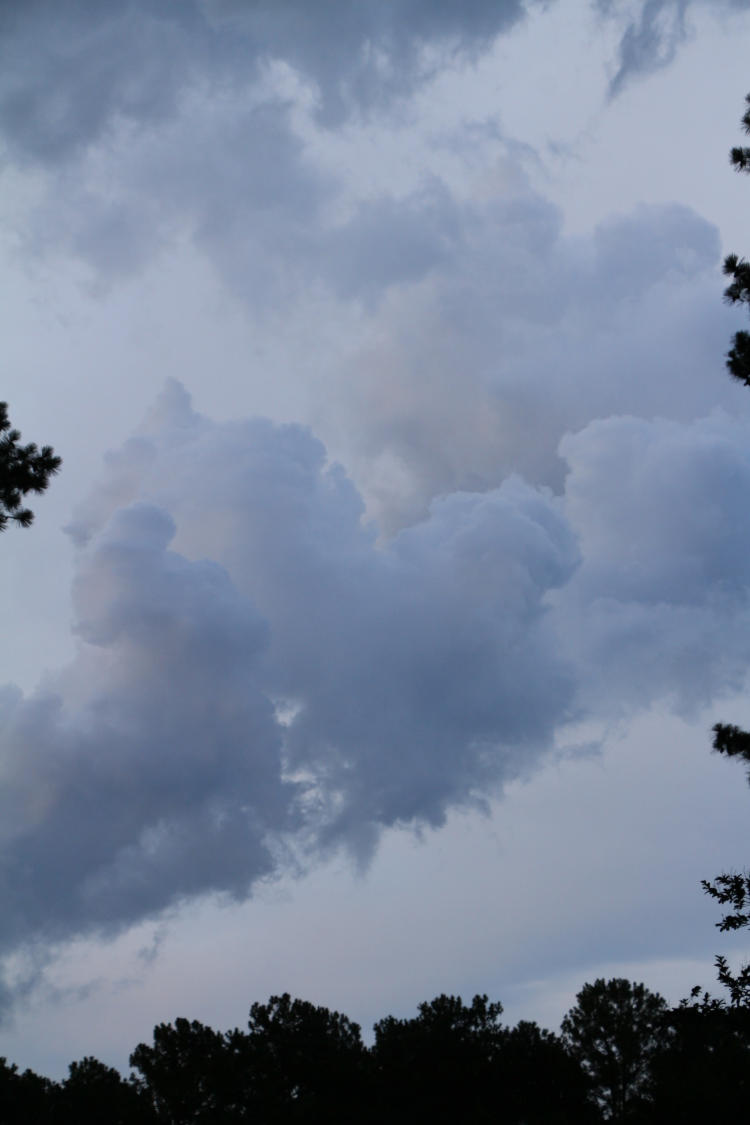
This is facing east-northeast, the sun largely behind me, and you can see that the sun isn’t having much of an effect. I went inside for a short while, and we have only one window that faces west with any kind of view; as I passed it just a little later on, I saw the sky in that direction was suddenly brilliant orange. The neighborhood pond is a few minutes away, so even though I scampered right out with the camera, I could see the color fading even as I tried to get clear of all the trees in the neighborhood to have a nice view. It was fading as I got there, but not so much that all hope was lost.
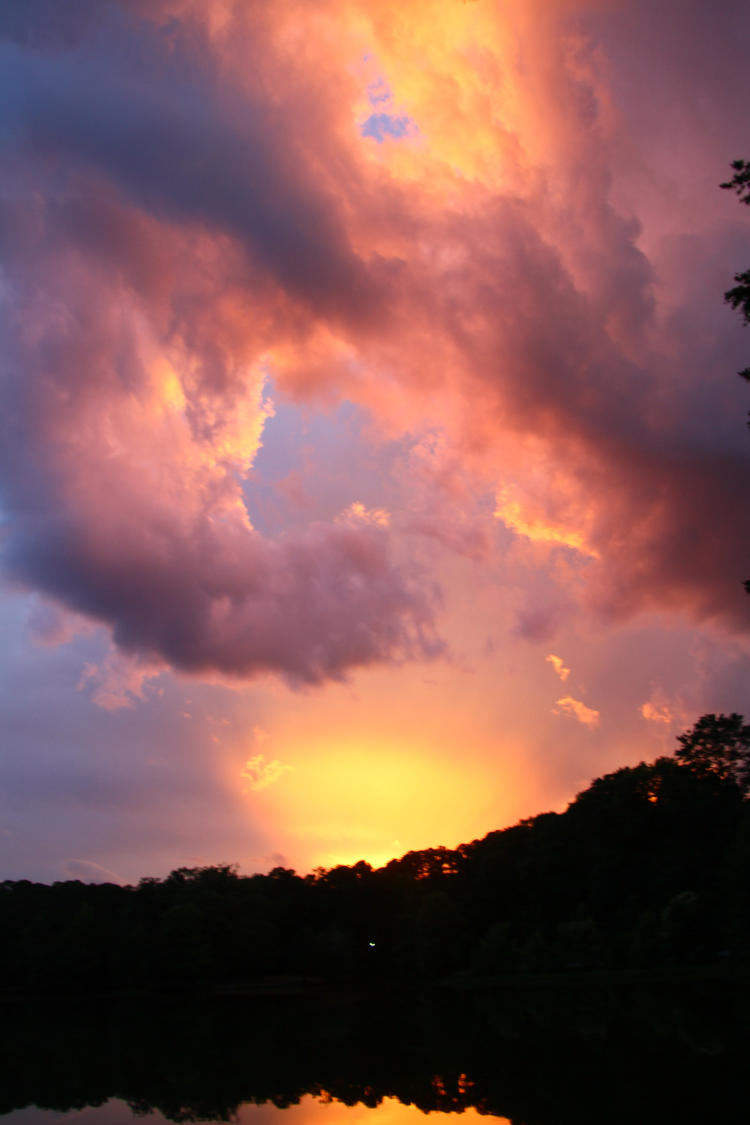
Somewhere over the horizon, the sun had found a break in the clouds even as it was setting, and the North Carolina skies in this area (who I’m convinced are at least semi-sentient) had done their damnedest to try and clear completely before sunset, as is their wont, but the approaching storm was stronger. As the light changed, the clouds were also twisting and shifting at a pretty good clip, betraying that the high-altitude winds were much more active than the dead air down where I was. I played with some frames of opportunity.
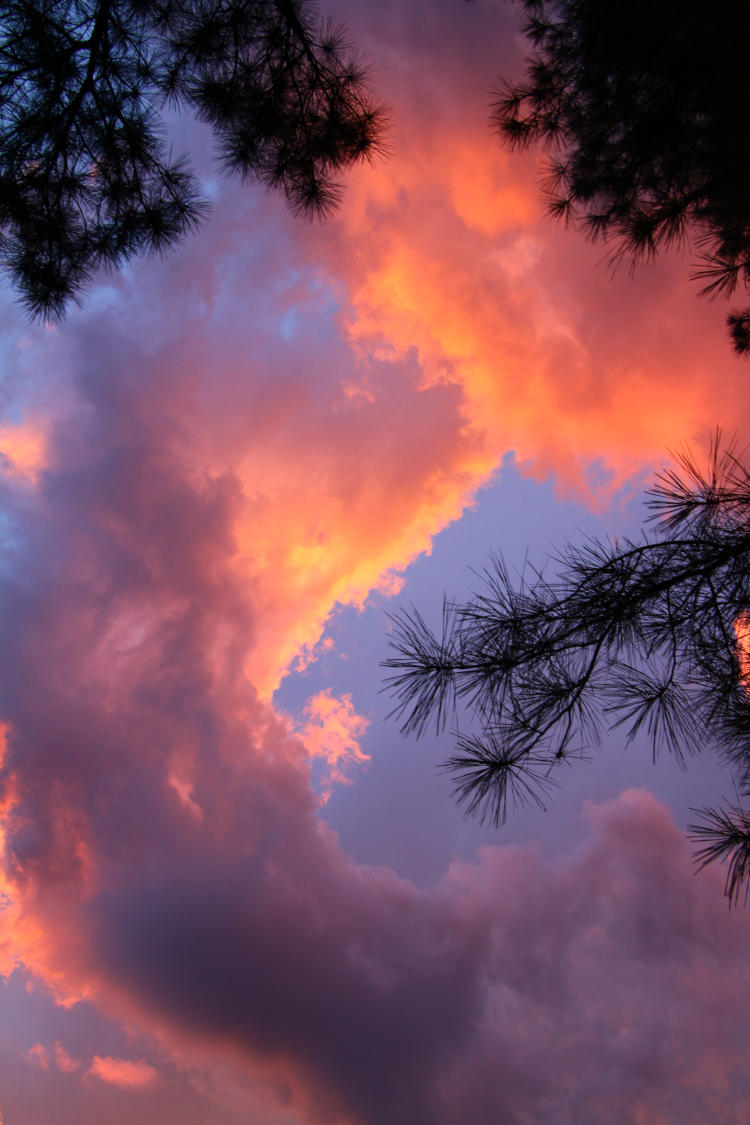
The fit was pretty good, really – how could I pass this up? Yet while the sky was so dramatic, it wasn’t really evidence of an active front yet, and the lightning tracker app indicated that electrical activity was still a ways off. I did a few photos of opportunity, but it was incredibly muggy out and I decided not to wait for the storm, which might still be another hour.
I kept an eye on the online tracker, and was back out just shy of an hour later, when the sky had gotten properly dark. It was certainly active then.
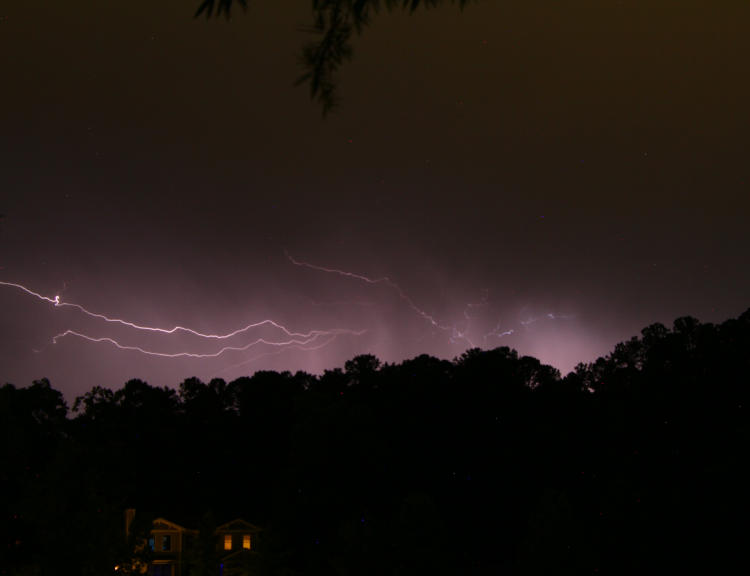
This is just faintly out of focus, and I think it’s because of the peculiarities of the Canon 18-135 STM lens, but I’m not going to go into technical stuff right now – suffice to say that I’d switched to manual focus because there was no light for autofocus, but manual focus is not entirely manual for that lens. Later images are fine, though.
There were three active cells within a 90° arc from my position, and it was tough trying to determine where I should be aiming, much like trying to decide which lane is fastest at the supermarket (and entirely unlike trying to decide which lane is fastest in a traffic jam because they are all averaging the same speed you morons.) I certainly missed a couple of good electrical discharges, but I got enough to make the effort more than worthwhile regardless. Even if they looked a little weird.

This is fairly wide angle and cropped only slightly, evidence of a multiple-bolt discharge centered on that one point. Also evidence that I can’t level the camera after all these years, but c’mon, it was dark (we’re going to conveniently ignore the fact that the 7D has a simple built-in leveling function that takes two button presses to activate.)
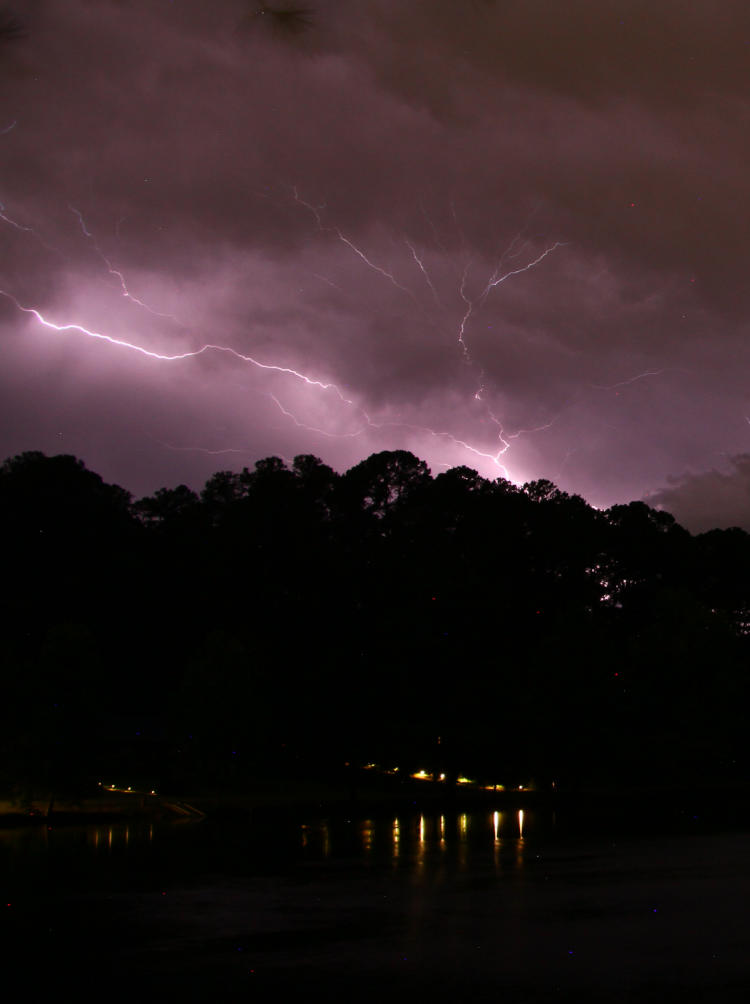
This was the second cell, and has been cropped to vertical to enhance that fan pattern from the lightning arms. It would have looked good on video, perhaps, because they spread across the sky like roots, but I knew that video would be largely grainy without any of the sky definition that time exposures provide. Most of these are about 20 second exposures, by the way.

This was the third cell, and you could almost stitch these above three images together into one complete panoramic, with this one being the rightmost. It produced a lot of bright flashes, but they were mostly hidden by trees from my vantage; had I moved to see this one better, the others would have been obscured. As it was, this lightning in this cell seemed mostly hidden within clouds anyway, though it did define those well for this frame at least.
The storms were getting closer, and while few ground strikes were in evidence, the activity was stretching more overhead, and I’ve had experience with that before; it was getting time to pack it up. I waited out one last decent strike, as long as it happened within two minutes, and I wasn’t disappointed.
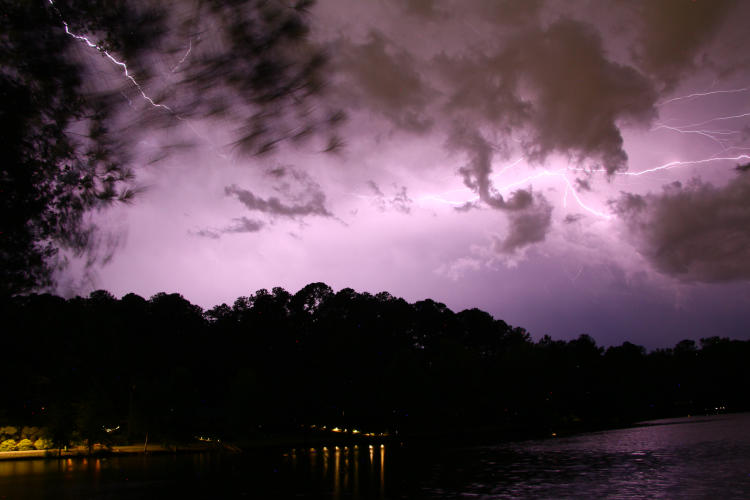
This was the very last frame, which is a lot more cooperative than many storms that I’ve pursued. I’ve said it before, but I’ve missed a lot more lightning photos than I’ve gotten, because electrical storms are tricky and unpredictable, and even getting to a scenic locale when one threatens is very hit-or-miss – I’m lucky to have the pond so close by. Ideally, however, I want a very tall tower with a view to all sides, preferably where the mountains reach the sea at the edge of a tropical rainforest – with, of course, convenient shopping nearby that I could get to in my Lotus Esprit. All of this comes from people paying an appropriate amount of money for my images, of course…



















































